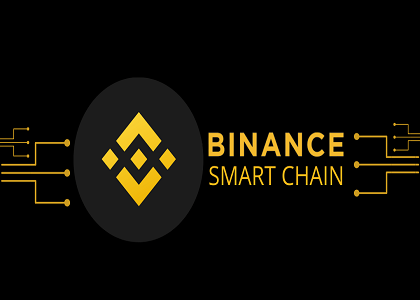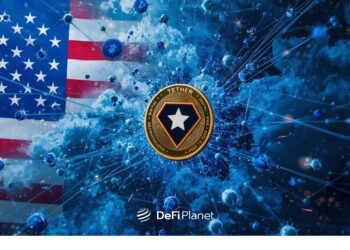Last updated on September 3rd, 2025 at 04:29 am
Binance Chain and Binance Smart Chain are different blockchains belonging to the same ecosystem.
Binance Coin (BNB) is the native token of the Binance ecosystem. Binance Chain was an earlier version that was fraught with issues that undermined the growth of the ecosystem. It sacrificed some crucial elements to achieve ultra-fast trading speed. For starters, it was not as easily programmable as what was obtainable in other blockchains.
Binance Smart Chain is altering this, as it plugs the issues found in Binance Chain without sacrificing ultra-high trading speed. It is also compatible with its previous version, Binance Chain, to ensure continuity in the Binance ecosystem. Before diving into Binance Smart Chain, it is useful to first provide a summary of the Binance Chain.
What Is Binance Chain?
The Binance Chain was designed to improve decentralized and high-speed trading functionalities. The largest DApp on the Binance chain is its decentralized exchange, which is arguably one of the most seamless exchanges in existence. Users do not have to possess advanced knowledge of cryptocurrency before they can utilize the features of the decentralized exchange. It is also integrated with its easy-to-use online wallet, known as Trust Wallet.
What Is Binance Smart Chain?
Binance Smart Chain (BSC) added functionalities that were not in the Binance Chain which includes compatibility with Ethereum Virtual Machine (EVM) and smart contracts. An underlying concept surrounding BSC was to make it highly scalable like Binance Chain while adding smart contracts to the ecosystem. It also seeks to address the common blockchain challenge of scalability.
The two blockchains operate in parallel to each other, incorporating the perks of both worlds for users to enjoy. It is important to note that BSC was not created to act as a layer 2 that depended on the Binance Chain for survival. They both work independently of each other, meaning that if a time comes when Binance Chain is no longer operational, BSC will continue work without disruption. Though they may have some differences, they still have incredible similarities, especially when considered from a design standpoint.
BSC plays a role in the fast-growing Decentralized Finance (DeFi) sector, with Decentralized Exchanges (Dexs), such as PancakeSwap, being hosted on the BSC.
Key Features Of Binance Smart Chain
Below are some key features of Binance Smart Chain:
Consensus Mechanism
BSC uses the Proof of Staked Authority mechanism, which is a combination of both Proof of Authority (PoA) and Delegated Proof of Stake (DPoS). At the moment, the average block time is about three seconds.
Validators are rewarded with BNB once they produce blocks, and before a person can be eligible for election, they should have staked more than 10,000 BNB.
Another category of users in the BSC ecosystem is delegators. They are in charge of staking the BNB behind the elected candidate.
Out of the elected candidates, those in the top twenty-one rank will be allowed to take turns while processing the blocks. They are chosen based on how much BNB they stake. Both validators and delegators are rewarded for their time.
Compatibility with Ethereum
Binance Smart Chain is compatible with the Ethereum Virtual Machine (EVM), which allows it to work seamlessly with tools and decentralized apps on the Ethereum blockchain. Adding this feature makes it easy for developers to easily move their DApps from Ethereum to BSC and vice versa.
Coin “burns”
Binance is famous for its quarterly BNB coin burns. Binance has a public commitment to burn (or destroy) 20% of the profits made by its exchange every quarter. Since BNB is its native utility token, the regular coin destructions help to ensure BNB is not inflationary which in turn supports its market price. Most recently, in July 2021, Binance announced that it had conducted its “16th quarterly BNB token burn of 1,296,728 BNB” (approx. $400m worth of coins).
Cross-chain compatibility
Binance Chain and BSC are compatible with each other, making it easy for users to easily port their assets from one chain to the other. Doing this has made users enjoy high-speed trading features on Binance Chain while utilizing BSC for decentralized apps and the likes. This cross-chain capability has opened the ecosystem to numerous features and perks.
Binance Chain is the home to BEP-2 and BEP-8 tokens, which can be exchanged for BSC’s BEP-20 tokens. BEP-20 bears similar characteristics with ERC-20.
For those that want to transfer their tokens from one chain to the other, using Binance Chain Wallet is an easy option.
In Conclusion…
Though BSC may be the updated version of Binance Chain, its compatibility with Binance Chain has made it a force to reckon with when chains are concerned. Its features have continuously attracted both developers and users.
If you enjoyed reading this, follow DeFi Planet on Twitter and LinkedIn.





















